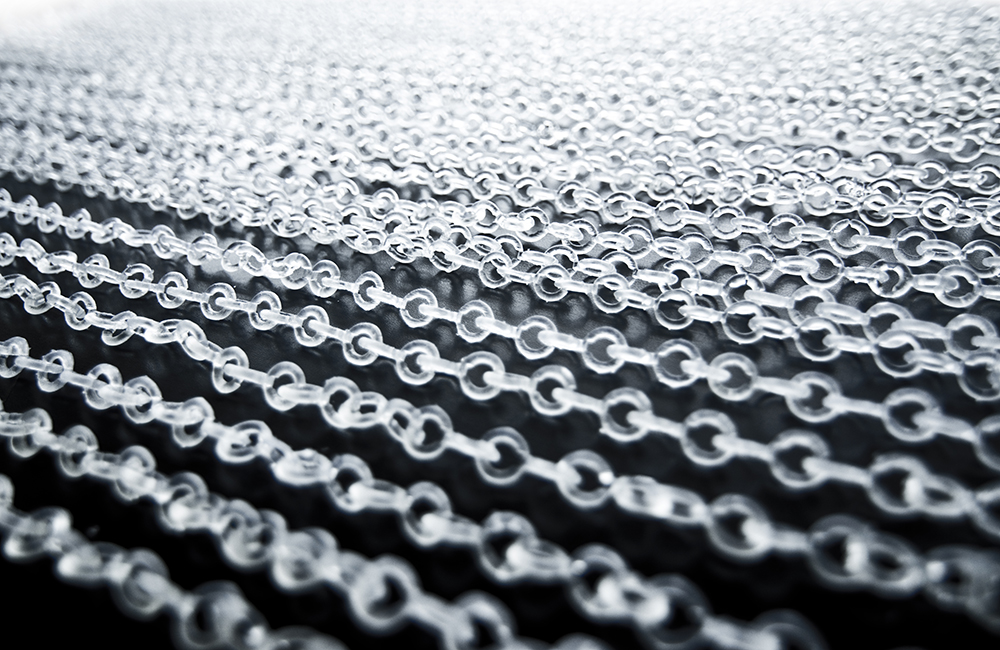
This fifty foot long chain was built as one piece inside a FORM 1 using Hyperform. Courtesy of Marcelo Coelho.
September 19, 2013
The design constraints of additive manufacturing (AM) are mainly centered on build space, rather than complexity. People can (and do) design all kinds of crazy geometries to be produced via AM, but larger parts or prototypes require the object be built in multiple parts for later construction, or simply a larger 3D printer. This is one reason why a move toward larger AM systems has been an industry trend for the last few years.
The old maxim says to work smarter, not harder. What if, instead of building larger and larger 3D printers, we could develop a method of building large-scale objects inside the restricted dimensions of existing 3D printers? Researchers at MIT have developed a new method of printing large objects in limited build envelopes that they call Hyperform.
The idea comes from Marcelo Coelho and Skylar Tibbits. Neither researcher is an AM specialist. Coelho’s doctoral thesis was on shape-changing materials that could reshape themselves when prodded with electricity, and Tibbits is better known for his work with 4D printing. Working together, the pair took a look at AM to see how large designs could be made to work without simply building a larger 3D printer.
From Coelho’s webpage:
Hyperform is a design and research project that attempts to address this problem by identifying computational and material folding strategies that will allow large scale objects to be compressed into a minimal volume to maximize the printing capability of desktop 3D printers. Folding as a computational design and assembly strategy can be found across natural systems, such as in the structures of proteins and DNA, and in industrial applications, which seek to increase efficiency while supporting high degrees of structural complexity, interoperability and reuse.
To provide an example, the research team designed, printed and constructed a chandelier that was approximately 4 x 4 x 4 ft. in a FORM 1, which has a build envelope of 4.9 x 4.9 x 6.5 in. The entire chandelier was printed out in a chain that included joints which are only capable of bending in one direction to assist with assembly. Once every joint was bent and snapped into place, kind of like origami, the chandelier took form.
Obviously not every object can be built from pre-generated chains and folds, but it’s the concept that’s important, not the earliest objects built as examples. I don’t think many people would find a use for a frog built from hot glue, but that was the beginning of Stratasys’ FDM process. The MIT concept is an intriguing one that has plenty of potential, particularly for AM systems found in places where space is at a premium, such as on the space station or on the front lines with the military.
Below you’ll find a video about Hyperform.
Sources: Salon, Marcelo Coelho
Subscribe to our FREE magazine, FREE email newsletters or both!
About the Author
John NewmanJohn Newman is a Digital Engineering contributor who focuses on 3D printing. Contact him via [email protected] and read his posts on Rapid Ready Technology.
Follow DE






